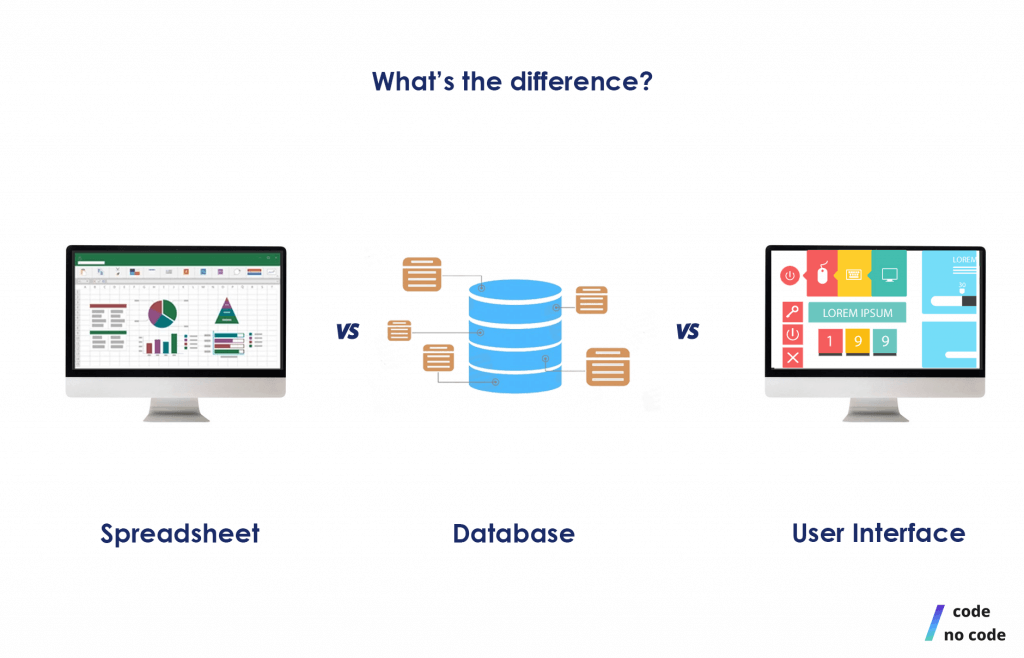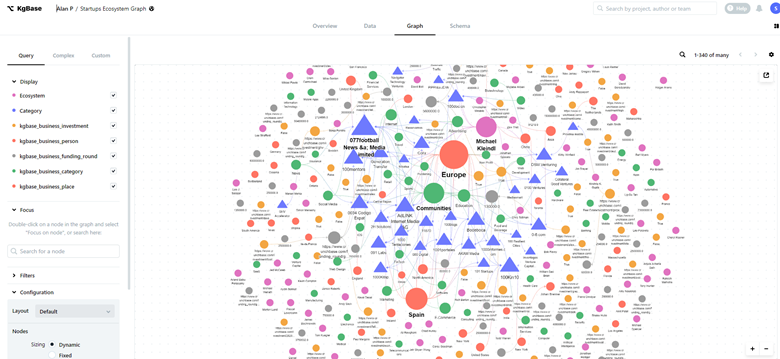No-Code Open System Data Source Creation: Empowering Services to Develop Faster
No-Code Open System Data Source Creation: Empowering Services to Develop Faster
Blog Article
Discover Just How Scalable Databases Can Be Used Without Coding to Enhance Your Company Workflow
In today's busy organization environment, the capability to handle and analyze data successfully is vital. Scalable databases, specifically when coupled with no-code options, use a transformative strategy that equips non-technical individuals to streamline procedures. By employing devices that call for no coding expertise, companies can improve their operational capabilities while lessening dependancy on IT sources. The genuine concern exists in understanding exactly how these remedies can be customized to specific business needs and what prospective obstacles may develop in their application. Discovering these facets can brighten the course to functional quality.
Comprehending Scalable Data Sources
Scalable databases are crucial for modern service procedures, allowing organizations to successfully manage enhancing quantities of data without sacrificing performance. These databases are created to adapt and grow to the altering needs of a business, guaranteeing that they can manage bigger datasets and more complicated inquiries as business needs progress.
Understanding scalable data sources entails recognizing their two main types: vertical scaling and horizontal scaling. Vertical scaling, or "scaling up," includes including more power (CPU, RAM) to an existing server to enhance efficiency. On the other hand, straight scaling, or "scaling out," entails adding extra servers to disperse the tons, which typically causes better adaptability and mistake resistance.
An additional essential facet is the style of scalable data sources, which can be either non-relational or relational. Relational databases, such as MySQL and PostgreSQL, are structured and use SQL for questions, while non-relational data sources, like MongoDB and Cassandra, use even more versatility with unstructured information.
Inevitably, recognizing scalable data sources is crucial for companies aiming to utilize information as a critical possession, enabling them to remain affordable in a progressively data-driven atmosphere.

Benefits of No-Code Solutions
Opening the possibility of no-code services equips organizations to streamline operations and boost performance without the need for substantial shows knowledge. These platforms enable non-technical customers to create, modify, and handle data sources easily, hence democratizing access to innovation throughout teams.
One of the main benefits of no-code services is their speed of application. Services can promptly release applications and automate procedures, significantly decreasing the time spent on advancement cycles. This agility allows companies to respond immediately to market adjustments and consumer needs, cultivating an affordable side.
In addition, no-code systems lower dependence on IT divisions for day-to-day jobs, permitting technological groups to concentrate on even more intricate tasks that call for specialized skills. This shift not only maximizes resource appropriation but also advertises development within the organization.
Cost-effectiveness is an additional advantage, as no-code options can decrease growth and maintenance expenditures. By lessening the requirement for coding proficiency, firms can harness the capacities of their existing workforce without the overhead of working with extra personnel.
Popular No-Code Database Devices
The increase of no-code solutions has actually caused the development of various data source tools that cater to organizations looking for effectiveness and availability. These tools encourage individuals with limited technological competence to create, manage, and control databases flawlessly.

Caspio stands out for its ability to construct internet applications with no coding. It enables services to create robust data sources and deploy applications promptly, dealing with numerous industry requirements. Likewise, Knack provides powerful information and easy to use user interfaces monitoring capabilities, enabling companies to build personalized applications customized to their workflows.

Use Situations in Company Workflow
How can businesses utilize data source devices to enhance their operations? Scalable data sources supply organizations with powerful capacities to take care of and examine data get more without the need for extensive coding expertise. These devices can improve various organization procedures, ultimately leading to boosted effectiveness and productivity.
One prominent usage situation is customer partnership administration (CRM) Companies can utilize scalable data sources to track client interactions, preferences, and responses, making it possible for individualized communication and far better service. By systematizing this details, groups can collaborate better and respond to customer requirements in real-time.
Another substantial application is supply management. Companies can utilize no-code data source tools to check stock degrees, track shipments, and forecast need. This guarantees optimum inventory levels, lowers waste, and reduces stockouts.
In addition, project administration can profit from scalable databases by enabling groups to manage tasks, target my latest blog post dates, and sources in a merged system. With real-time updates and data visualization, project supervisors can make informed decisions.
Getting Going With Implementation
Executing scalable data sources in organization operations needs an organized approach to guarantee successful assimilation and application. The primary step is to perform a complete demands assessment, identifying particular service requirements, data types, and expected development patterns. This fundamental understanding will direct the choice of the proper data source remedy.
Following, select a straightforward, no-code data source system that straightens with your functional objectives. no-code. Several modern-day solutions offer intuitive user interfaces, permitting non-technical customers to take care of information properly. After picking a system, develop a clear information design that describes exactly how data will be organized, accessed, and maintained
Training is essential; guarantee that team members are geared up with the required skills to utilize the database. Take into consideration giving tutorials or workshops to acquaint personnel with the system's performances.
Verdict
In verdict, the combination of scalable databases via no-code options presents substantial benefits for service operations. Inevitably, leveraging these innovations can lead to enhanced efficiency and operational effectiveness, placing services for sustained development in an affordable landscape.
One prominent no-code data source tool is Airtable, which incorporates their website the performance of a spread sheet with the power of a data source.Just how can organizations leverage data source tools to enhance their procedures? Businesses can make use of scalable data sources to track client interactions, choices, and feedback, making it possible for personalized communication and far better solution.Implementing scalable databases in service procedures calls for a structured method to make sure effective assimilation and utilization.In conclusion, the combination of scalable databases with no-code options offers substantial benefits for business operations.
Report this page